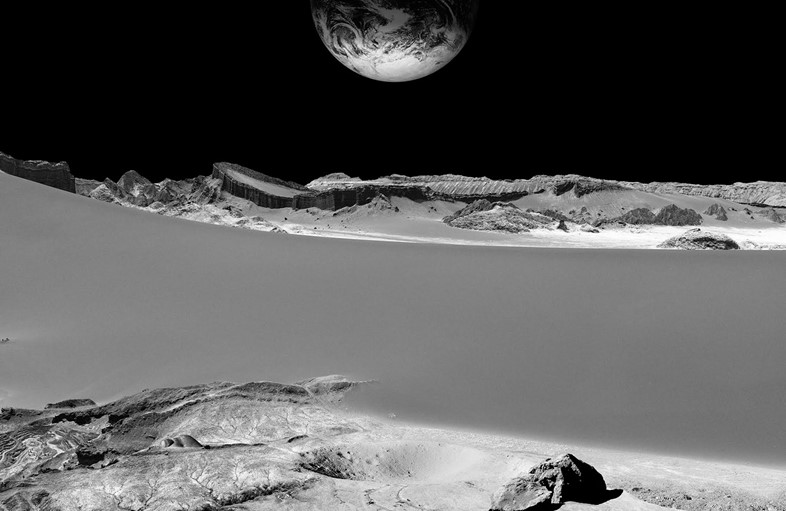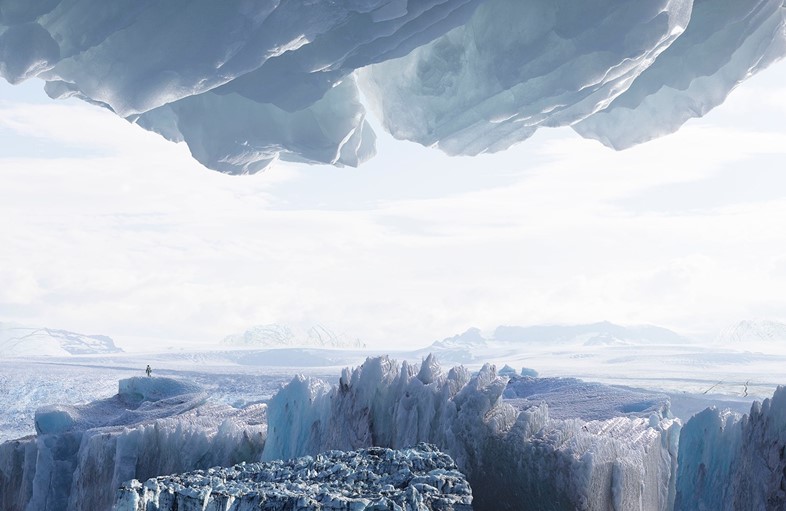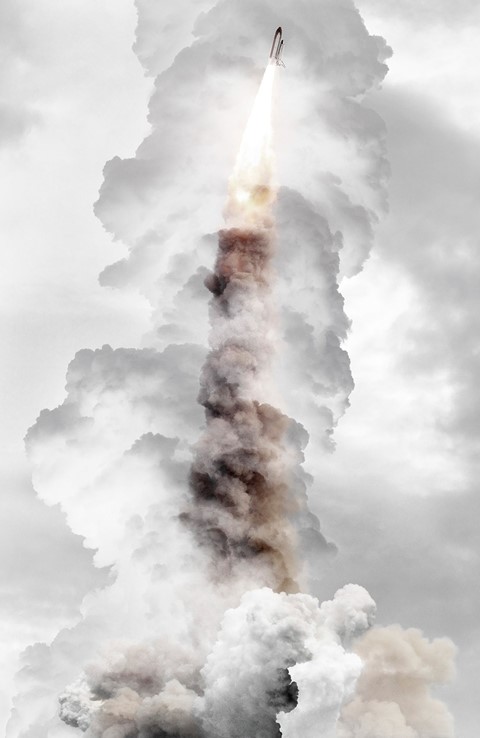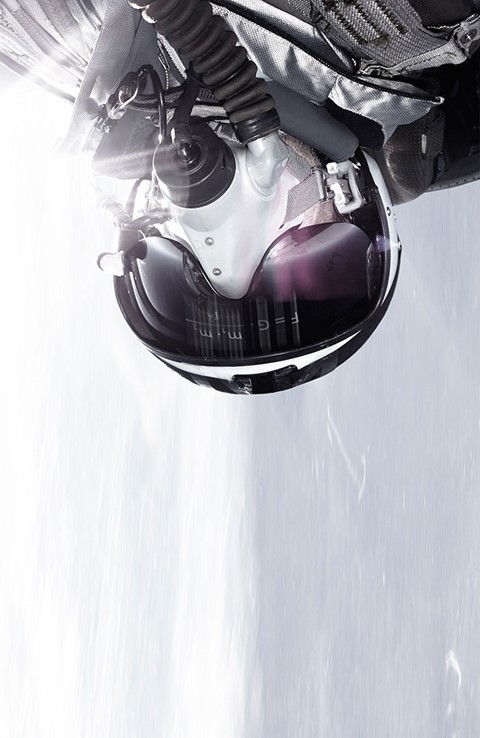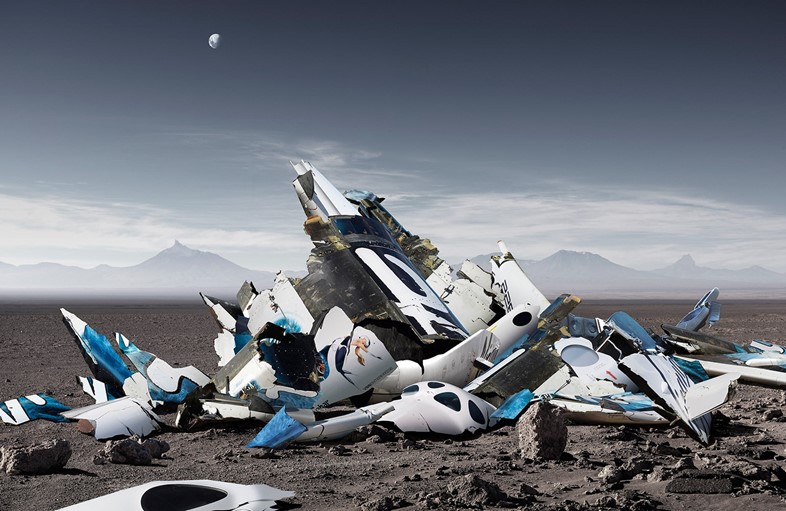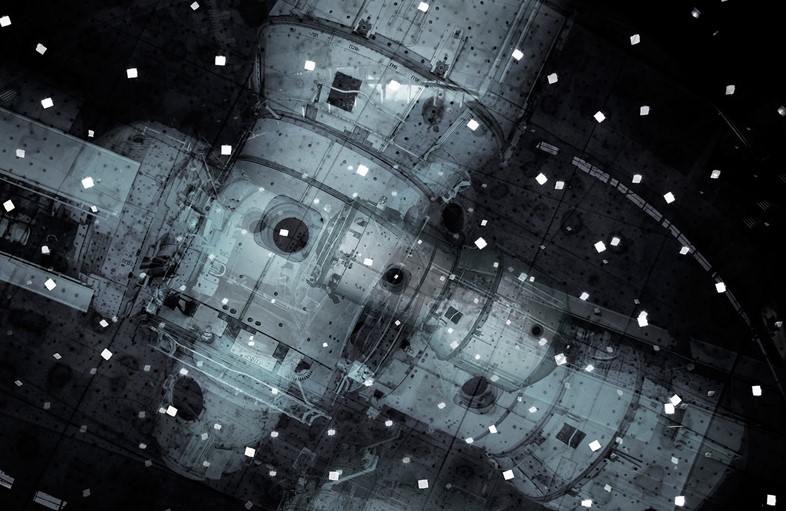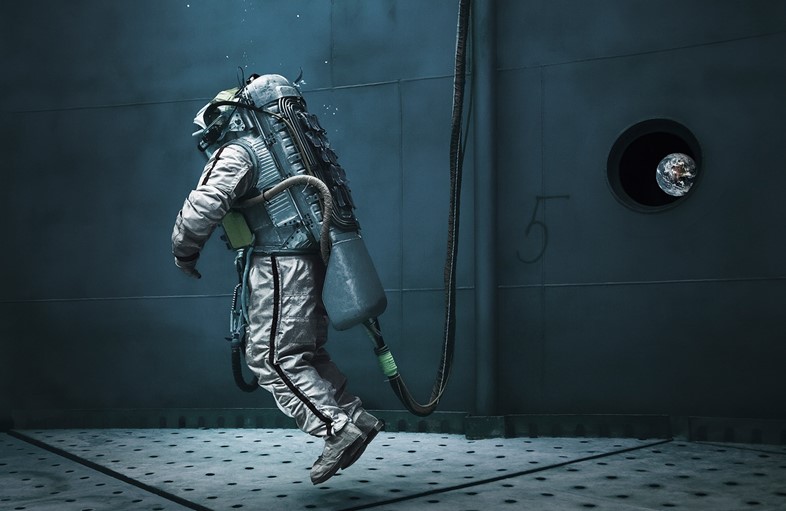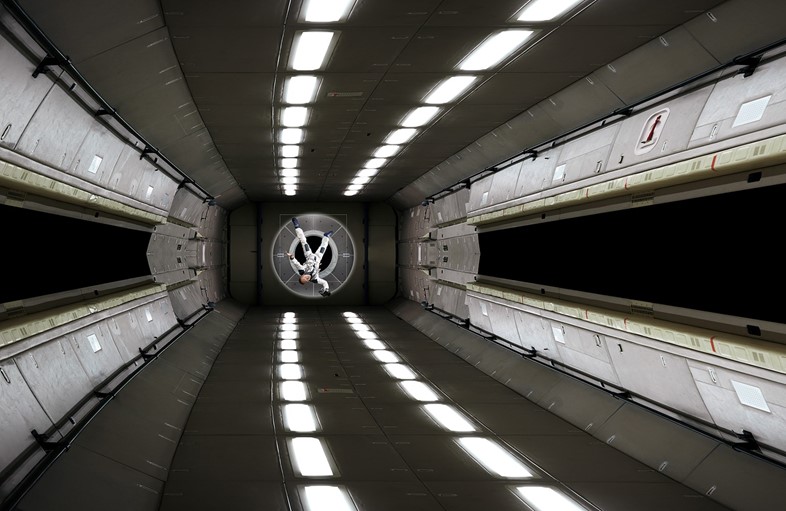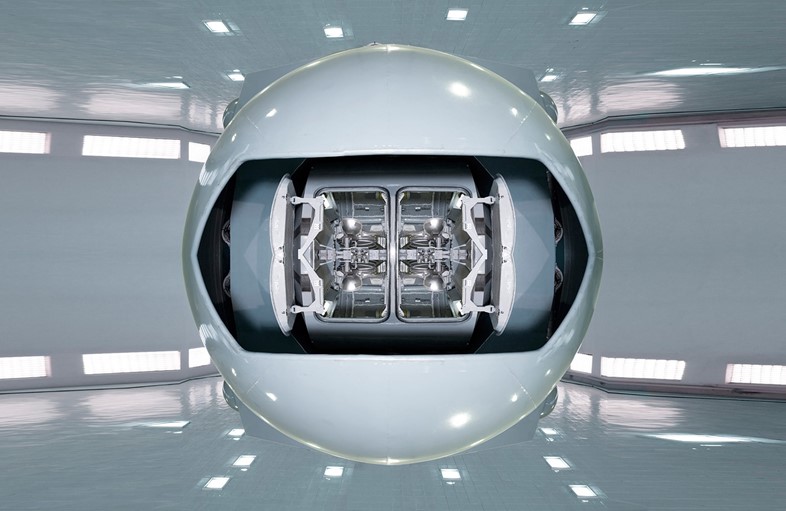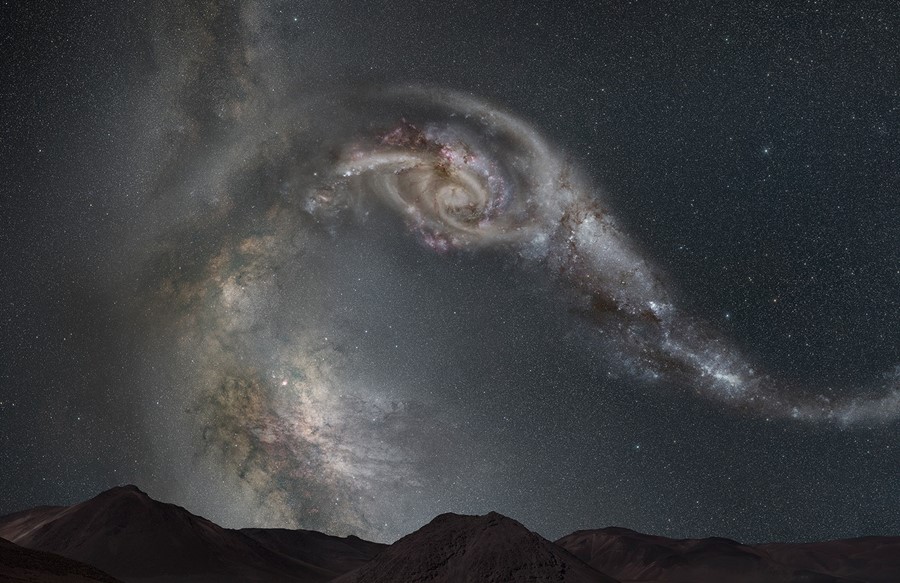While most artists and photographers undertake a stint at art school in training for their craft, Michael Najjar’s demanding choice of subject matter necessitates a more extreme approach – an intensive three-year spell at cosmonaut training centre Star City in Russia, to be more precise. The German adventurer is in training to become the first civilian artist to travel to outer space, and a new exhibition of his most recent body of work opening at New York’s Benrubi Gallery this week, aptly entitled outer space, both captures and visualises the futuristic world which is soon to become his immediate environment.
The photographs on display in the exhibition will range from authentic snapshots of life as it unfurls in zero-gravity conditions, to informed depictions of fictitious realities which seek to “make visible what is invisible.” The image gravitational stress at the edge of space, for example, was taken during an edge-of-space flight in a Russian MiG-29 jet fighter, which was part of Michael Najjar’s cosmonaut training. “Seated in the jet fighter, the artist was catapulted with supersonic speed into the stratosphere, reaching a height of 19,500 m,” Benrubi explains. “The artwork evokes the loss of orientation caused by enormous acceleration and crushing g-forces. The image is a self-portrait of the artist taken at 19,500m at a speed of 1,800 kph, and illustrates how totally dependent the human body is on technology for survival in such an extreme environment.”
Elsewhere, the visualisations of environments such as the surface of Europa, one of the moons of Jupiter, are strangely poetic in the way they evoke unknown landscapes and yet remain founded in scientific fact. “Moon mining visualizes the importance of the moon as a future source of energy,” Benrubi continues. “Our moon possesses an abundance of helium-3 (two protons and one neutron). One tonne of it could supply the electricity of a city the size of London for an entire year… The major part of the composition, moon mining, is taken up by moon sand, known as regolith, in which the helium-3 gas is embedded… The work is composed of photographs of Moon Valley in the Atacama Desert and original shots of the moon’s surface taken by the Apollo astronauts.”
Whether you too are an aspirating astronaut, or you fritter away hours wondering what exists outside of space as we know it, Najjar’s exhibition presents a new universe of intrigue and inspiration for us earth-bound beings.
#AnOtherHappyMonday
Michael Najjar: outer space runs from March 31 until May 14, 2016, at New York’s Benrubi Gallery.
